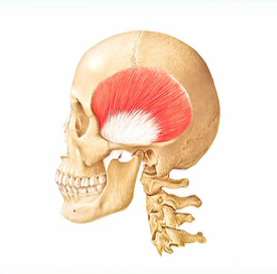Muscle and TMJ Exam: Palpation and Evaluation
Of all the skills that dentists have to learn, one that most of us don’t put enough emphasis on is the clinical examination. A quick muscle and joint evaluation should be done on all patients. Most of the time these evaluations take little time since most patients won’t have issues.

However, if you have a patient that does have problems, there’s a good chance that no other dentist has ever done this type of exam on them, and the exam will help differentiate your practice to the patient in a very positive way. I like to separate my clinical examination into two portions: extra-oral (muscle and joint) and intra-oral (medial pterygoid muscle, dental, perio and soft tissue).
Before the exam it is always helpful to get a history from the patient concerning headaches and joint sounds or pain. Then you’ll conduct the extra-oral exam by performing muscle palpations on their individual muscles. I tell my patients that this portion of the exam will consist of a massage of the neck and head region that will evaluate the muscles and jaw joints for any tension or discomfort. Noting that many of the muscles refer pain to other locations, which may occur during the palpation.
Temporalis: You’ll want to start with the anterior portion of the muscle. This muscle typically refers pain to its location, and also above the eye and to the maxillary posterior teeth. It’s helpful to do one side of the head at a time to avoid confusion in how the patient is reacting.
Trapezius: In a fluid motion, move down the back of the neck to the next muscle known as the trapezius. This muscle refers pain along the back of the neck, above the eye, to the angle of the mandible, and behind the ear.
Suboccipital: The next muscle in this process is the suboccipital, which can be found easily by gently sliding your hands forward along the side of the neck from the trapezius. This muscle refers pain around the ear.
Sternocleidomastoid: Slide your hands forward again and you’ll land on the next muscle that needs to be evaluated: the sternocleidomastoid. This muscle refers pain above the eye, in front of the ear and right behind the ear.
Digastric: Digastric muscles are antagonistic of the elevator muscles. It is not uncommon for patients that have pain within their elevator muscles to also experience pain in the digastric muscles. Digastric muscles refer pain to the angle of the mandible and the lower incisors.
Hyoids Digastric: The digastric muscles go through the hyoid bone; which attaches to the sternum and clavicle. When the hyoid contracts, it pulls the Hyoid bone and mandible down at the same time. This muscle also refers pain to the angle of the mandible and the lower incisors.
Masseter: When I palpate the masseter, I do it extra-orally and intra-orally. Another thing to note is that the masseter doesn’t usually contract unless the posterior teeth touch. It will be helpful to encourage the patient to open wide, close and clench their teeth to determine when the muscles contract and if they are simultaneous. This muscle refers pain to the upper and lower posterior teeth, the mandible, above the eye and in front of the ear.
Medial Pterygoid: To complete the circle of muscle palpation, you’ll most likely end your extra-oral exam by now moving to the joints, as the medial pterygoid is much easier to palpate intraorally. The medial pterygoid muscle refers pain in front of the ear and over the joint.
FOUNDATIONS MEMBERSHIP
New Dentist?
This Program Is Just for You!
Spear’s Foundations membership is specifically for dentists in their first 0–5 years of practice. For less than you charge for one crown, get a full year of training that applies to your daily work, including guidance from trusted faculty and support from a community of peers — all for only $599 a year.

By: Frank Spear
Date: February 2, 2017
Featured Digest articles
Insights and advice from Spear Faculty and industry experts


